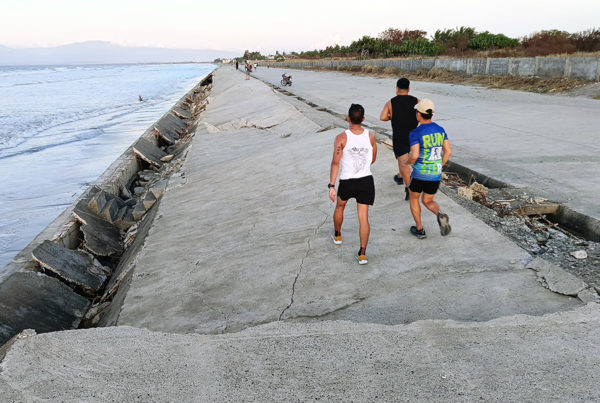Leptospirosis deaths can be prevented- CHO
EXPERIENCING flu-like symptoms such as fever, head and body ache, and malaise for at least three days?
Go seek medical help right away as these are the early symptoms of leptospirosis, a disease commonly acquired from infested floodwater.
This was the advice prescribed by said City Health Officer Leonard Carbonell as he laments that the seven deaths caused by leptospirosis in Dagupan last month could have been prevented had the victims been brought to the hospital during the early stage of the infection.
“The victims sought hospitalization only when they were already unable to urinate, unable to stand, and when already having difficulty breathing,” Carbonell said during the Pantongtongan Tayo radio program last Tuesday.
Carbonell, a doctor, noted that the victims died within 34 hours after admission in the hospital.
The fatalities, all male, included a farmer, driver, fishpond caretaker and construction workers had experiencing the symptoms for two to three weeks before they were rushed to the hospital.
The early symptoms of leptospirosis can appear as early as two days, or as late as 30 days, after contracting the leptospira bacteria that enter through open wounds.
In some cases, however, the symptoms may disappear for a day or two when the bacteria are still breeding, then resurface when the bacteria have spread.
Symptoms in the advance stage include reddening of the eyes, yellowing of the skin and difficulty in breathing and in urinating.
These late signs indicate that the liver, the lungs and the kidneys, have already been compromised, Carbonell explained.
DOXYCYCLINE
As a preventive measure, Carbonell advised people living in frequently flooded areas to take a dose of doxycycline.
The prophylactic medicine is given free in areas that are considered high-risk and is available at the city health office, the barangays and the City Disaster Risk Reduction and Management Council, he said.
The number of leptospirosis cases recorded in Dagupan from January to August was 25, much higher than the five recorded in the same period last year.
Meanwhile, Dr. George P. Calugay, head of the Department of Health-Pangasinan said the province has recorded 98 cases from January to August, the highest in Region 1.
He, however, quickly qualified that the high ratio of cases is due to the large population of the Pangasinan. (PIA-Pangasinan/ARF)
LEPTOSPIROSIS ON THE WANE, SAYS PPO
LINGAYEN—With the rains, and its subsequent flooding, slowing down, leptospirosis could now be on the wane in Pangasinan with no new cases reported so far this month.
From January to September 10, the Provincial Health Office (PHO) recorded 74 leptospirosis cases, almost 300 per cent higher than the 25 in the same period last year.
Dr. Ana Theresa De Guzman, provincial health officer, said of the total this year, at least 54 were registered during the rainy month of August, which was marked by prolonged monsoon rains that inundated several towns, particularly along the Agno River and some low-lying areas.
Leptospirosis claimed 18 lives this year compared to six last year. Of the 18 deaths, 14 occurred last August, two in July and one each in February and April.
Dagupan City registered the most number of deaths from leptospirosis, followed by Binmaley, Asingan, Bani, Urbiztondo, Urdaneta City, Lingayen and San Fabian.
De Guzman said the high incidence in Dagupan was due to the prolonged floods in some barangays of the city due to heavy monsoon rains in August as well as the rise of tidal water almost everyday, affecting the coastal areas.
De Guzman noted that most of the deaths occurred because the patients were rushed to the hospitals too late as they were already in the last stage of their ailments and suffering from renal failure.
She called on the public not to resort to self-medication and immediately seek medical help at the first symptoms of leptospirosis, which include fever, like the usual manifestation when a person is suffering from flu or dengue.







